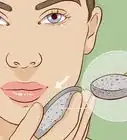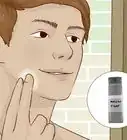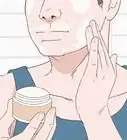This article was co-authored by Juan Sabino. Juan Sabino is a Professional Barber and the Owner of Juan's Barber Shop, a barbershop based in the San Francisco Bay Area. Juan has over 20 years of male grooming experience and over eight years of professional barber experience. He specializes in combovers, barber fades, and tapers and is focused on improving men's overall wellness.
There are 8 references cited in this article, which can be found at the bottom of the page.
This article has been viewed 12,584 times.
If you get bumps after shaving, you’re not alone. These annoying bumps are a type of skin irritation caused by ingrown hairs. Fortunately, washing your face, using the right razor, and shaving properly can help prevent these bumps from forming. With proper care, you can get a clean-shaven look without having to deal with blemishes.
Steps
Washing Your Face
-
1Clean your face with warm water before shaving. Splash some hot water on your face and let it soak in for up to 10 minutes. If you don’t feel like getting too wet, you could cover your face with a warm, damp towel for a few minutes.
The heat opens up your pores while softening your facial hair.[1] Softened hairs are much less resistant to the motion of your razor blade.[2]
One of the best times to shave is right after you get out of the shower. Standing around the water and steam is a sure way to get your hair nice and soft before shaving.
You can also clean your hair with a little bit of body wash or conditioner to help soften it. It’s worth doing if you’re in the shower or have a long beard. -
2Rub an exfoliant on your face to clear off old skin cells.[3] Squeeze a quarter-sized drop of exfoliant onto one of your hands.
Then, rub your hands together to work the exfoliant into a creamy foam. Use your fingers afterward to massage the exfoliant onto your face.
Rub your face in a circular motion to apply the exfoliant, then rinse it off with warm water after 1 minute.[4]
Exfoliants remove dirt and other debris in addition to old skin cells. All of this extra stuff can clog your pores, causing razor bumps to appear after you shave.
Use an exfoliant about once a day. Some people like applying it after shaving, but it’s best when applied beforehand to get cleaner skin. Physical exfoliating tools (gloves, loofah, or an ingrown hair prevention brush) are another option. If you have sensitive skin, then go with the soft and firm bristles.
-
1Spread an alcohol-free shaving gel or foam over your face. Pour a little bit of the shaving lotion into your hand first. An almond-sized dot of product is usually enough. Rub your hands together to work it into a lather, then rub it onto your face. Make sure your face is well-covered, including your upper lip and throat.[5]
- Shaving products keep your hair soft and well-lubricated, so they are an important part of getting a good shave. However, alcohol-based products dry out skin and should be avoided.
- Take a peek in the mirror to look for any areas you might have missed. Apply a little more product to any spots that look thinly covered.
Using a Razor
-
1Select a safety razor to reduce skin irritation. The razor you choose often plays a big role in how irritated your skin gets. A standard blade is usually the best choice since it allows you to get a close shave without cutting yourself.
It consists of a single blade inside a protective case, and it has a little bit of weight to it so you aren’t tempted to press it too firmly against your skin.[6]
Safety razors also happen to be inexpensive. You can get a new blade for about $0.25 USD and swap out the old one as soon as it starts to dull.
Cartridge razors make shaving quick and easy, but that can be a problem when you’re struggling to avoid bumps. Many of them have multiple blades that can cause extra irritation, and they are so lightweight that you might apply too much pressure when using them.
Electric razors are safe to use, but many of them don’t cut close to your skin at a consistent rate. Try using a rotary razor, since it can safely cut in different directions. It’s a good choice if you let your facial hair grow long. -
2Change out the razor blade if it isn’t sharp. Shaving is always better with a sharp blade.[7] Dull blades pull your hair without cutting through it cleanly. Most razor blades last for about 3 to 4 shaving sessions. Some may be good for 5 to 10 sessions, but they won’t be as sharp as they are out of the box.[8]
- Pay attention to how you feel while shaving. If you feel the blade tugging or cutting into your skin, it most likely is too dull. Change it out as soon as possible.
- Dull blades are one of the biggest causes of irritation and ingrown hairs. If you suspect that your blade is dull, replace it to be safe.
-
3Shave in the same direction the hair grows on your face.[9] Hair can grow differently for each person, but there are some patterns you can take advantage of for a better shave.
Generally, the hair on your upper lip and chin grows downward. The hair on your neck grows upward. That means you should shave downward from your nose to your jawline and upward from your neck to your chin.[10]
To figure out which way your hair grows, run your hand across your face in several different directions. Note when the hair feels most resistant to your fingers, since it will also resist a razor that way. Shave in the opposite direction.
The direction of your hair growth can change a lot, so it’s worth taking the time to figure it out before shaving. Even the left and right sides of your face can differ from one another. -
4Move the razor in a single stroke across your face. Apply a light but consistent amount of pressure. If you press down too hard, you could end up pulling or cutting your skin. Follow the direction of your hair with a single stroke until you reach a natural stopping point. Lift the razor off of your skin afterward.[11]
- Stop at any spot where the direction of your hair growth changes. For example, when you’re shaving down your cheek, stop at your jawline. Approach it from the opposite angle to continue shaving along the grain.
- When shaving, going from bottom to top is usually easiest, but you can go in whatever order you please as long as you’re careful about shaving along the grain.
-
5Rinse your razor in warm water after each stroke. The razor will be clogged with hair and shaving cream. All of this gunk gets in the way each time you reuse the blade unless you take time to wash it out. Hold the razor under the sink faucet until it’s clean again, then go back to shaving your face.[12]
- Remember that a rough shave increases the chances bumps. Your razor can’t do its job when it's covered in gunk, so take your time and rinse it off after each use.
Finishing and Cleaning up
-
1Go back over any areas that still need work when you’re done. Give your entire face a once-over before cleaning up any spots that don’t look clean. These spots will be a little more delicate the second time around.
Wash off anything left on your face, then apply a new layer of shaving cream. Shave your face again in single strokes, washing the razor off each time.[13]
You are always better off shaving your face multiple times instead of trying too hard to get rid of all of the hair during the first pass. Doing this stops you from cutting too close to your skin, preventing razor bumps.
Since you won’t have to deal with as many long, stiff hairs during the second pass, you could try shaving in a different direction. Some people prefer going across the grain for the second pass and then against the grain for the third one. -
2Clean your face with cold water to remove any remaining debris. You don’t have to get back into the shower to get clean. Try splashing some cold water onto your face from the sink. In addition to washing off loose hair and shaving cream, wet any areas you passed over with your razor. Pat yourself dry with a towel afterward.[14]
- Hot water opens your pores when you start shaving. Cold water closes them back up. It helps prevent cut hairs from curling back toward your skin.
- Washing with soap and water isn’t necessary, although you can do it if you wish.
-
3Apply an aftershave balm or moisturizer to protect your skin. Shaving is pretty rough on your skin, and you will probably notice that it feels a little raw no matter how careful you were. Pour a dime-sized dollop of aftershave on your hand and work it into a lather.
Then, rub it all over your face. It doesn’t have to be washed off, so you can pack up your razor and admire your fresh look afterward.[15]
Aftershave products are designed to reduce skin irritation, but people react to them differently. Some people don’t even need to apply aftershave to avoid bumps.
If your skin is sensitive to aftershave products, try using an aloe-based balm or cortisone cream. You could also try a razor bump cream if you’re prone to ingrown hairs.
Expert Q&A
Did you know you can get expert answers for this article?
Unlock expert answers by supporting wikiHow
-
QuestionHow do I get a smooth shave on my face?
 Juan SabinoJuan Sabino is a Professional Barber and the Owner of Juan's Barber Shop, a barbershop based in the San Francisco Bay Area. Juan has over 20 years of male grooming experience and over eight years of professional barber experience. He specializes in combovers, barber fades, and tapers and is focused on improving men's overall wellness.
Juan SabinoJuan Sabino is a Professional Barber and the Owner of Juan's Barber Shop, a barbershop based in the San Francisco Bay Area. Juan has over 20 years of male grooming experience and over eight years of professional barber experience. He specializes in combovers, barber fades, and tapers and is focused on improving men's overall wellness.
Professional Barber
Warnings
- Shaving with a dull razor is a sure way to irritate or cut your skin. Always change out your blade once it starts becoming dull and tugging your skin.⧼thumbs_response⧽
- Since you’re rubbing a sharp blade against your skin, always shave with a slow, controlled motion. Avoid using too much pressure or shaving in a hurry, as that will leave your skin bloody and irritated.⧼thumbs_response⧽
Things You’ll Need
- Clean towel
- Shaving gel or foam
- Sharp razor blade
- Exfoliant
- Aftershave balm or moisturizer
References
- ↑ Juan Sabino. Professional Barber. Expert Interview. 28 January 2020.
- ↑ https://www.yalemedicine.org/stories/beard-mustache-skin-problems/
- ↑ Juan Sabino. Professional Barber. Expert Interview. 28 January 2020.
- ↑ https://www.yalemedicine.org/stories/beard-mustache-skin-problems/
- ↑ https://kidshealth.org/en/teens/shaving.html
- ↑ https://www.thrillist.com/culture/12-ways-you-re-shaving-wrong-tips-to-shave-your-face-better
- ↑ Juan Sabino. Professional Barber. Expert Interview. 28 January 2020.
- ↑ https://kidshealth.org/en/teens/shaving.html
- ↑ Juan Sabino. Professional Barber. Expert Interview. 28 January 2020.
- ↑ https://www.theguardian.com/lifeandstyle/2019/may/12/how-to-shave-groom-male-facial-hair
- ↑ https://www.thrillist.com/culture/12-ways-you-re-shaving-wrong-tips-to-shave-your-face-better
- ↑ https://www.stclair.org/services/mayo-clinic-health-information/diseases-and-conditions/CON-20373875/
- ↑ https://www.stclair.org/services/mayo-clinic-health-information/diseases-and-conditions/CON-20373875/
- ↑ https://www.stclair.org/services/mayo-clinic-health-information/diseases-and-conditions/CON-20373875/
- ↑ https://www.theguardian.com/lifeandstyle/2019/may/12/how-to-shave-groom-male-facial-hair
- ↑ Juan Sabino. Professional Barber. Expert Interview. 28 January 2020.
- ↑ https://viewthevibe.com/how-to-get-rid-of-razor-burn/
- ↑ https://www.ncbi.nlm.nih.gov/pmc/articles/PMC6585396/
- ↑ https://www.yalemedicine.org/stories/beard-mustache-skin-problems/
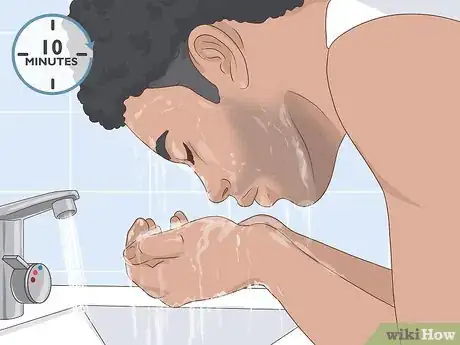

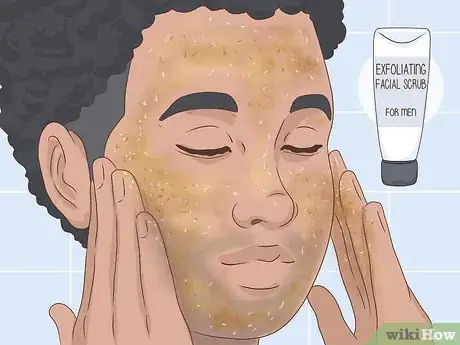
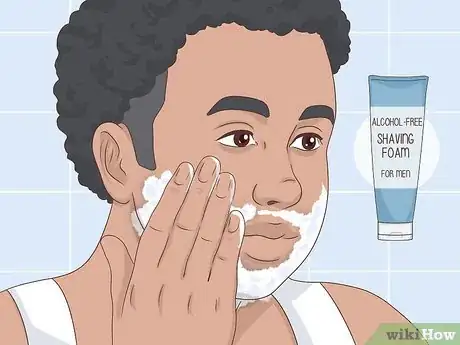
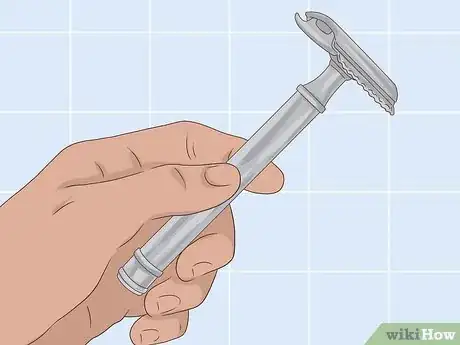
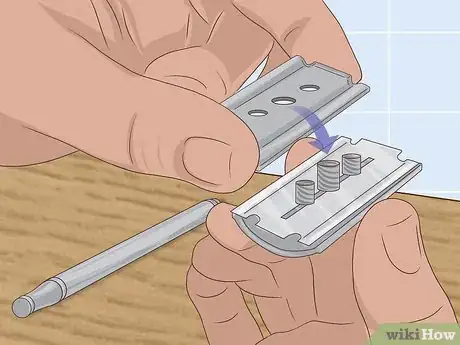

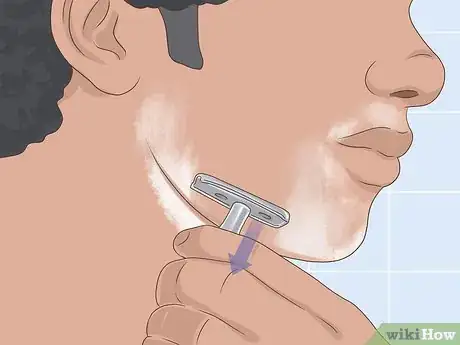
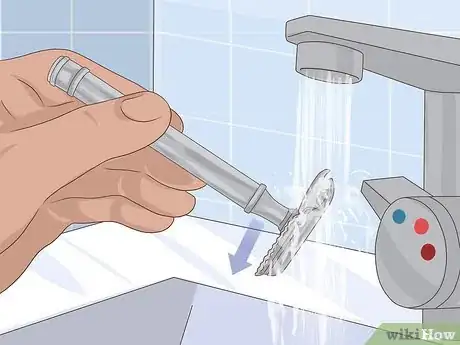
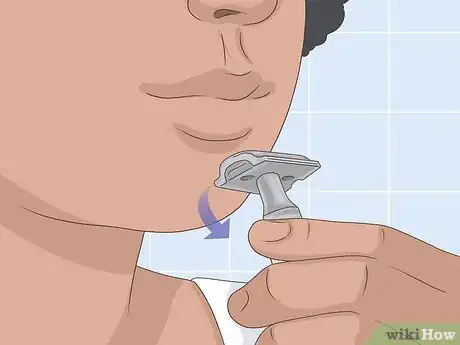
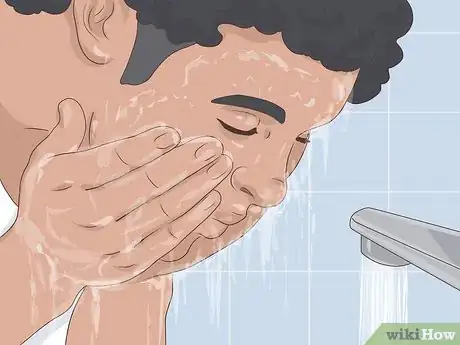

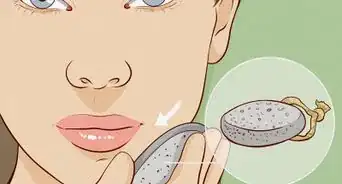
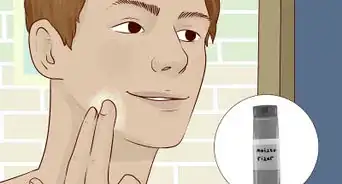


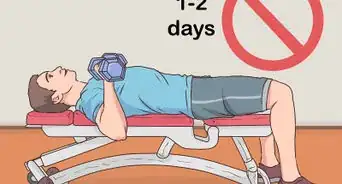


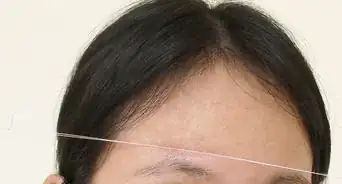
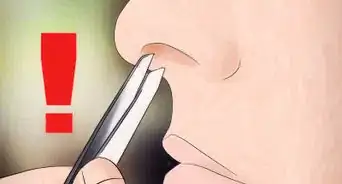






-Step-36.webp)
